Leg extensions are the accessory glue that holds leg day together. Be it a capstone to a squat challenge or a warm-up for the seasoned lifter, it’s hard to escape the inevitable burn as the leg extension kisses your quadriceps.
This pump doesn’t happen by accident — the leg extension is a pretty potent quad exercise for increasing strength and muscle mass in the fronts of your legs. But all hope isn’t lost if your gym doesn’t have a leg extension machine, you’re on the road, or you’re doing at-home bodyweight workouts.
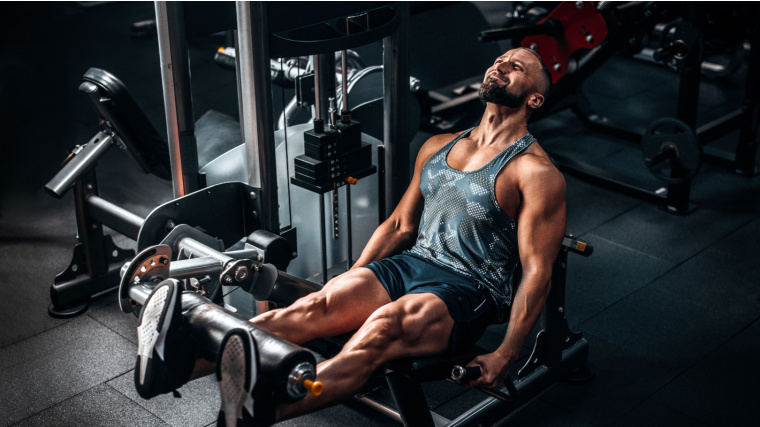
You do have options at your disposal even if you can’t hop onto a machine and extend those quads. Here are the eight best leg extension alternatives — and why you should try them out.
Leg Extension Alternatives
- Seated Bodyweight Leg Extension
- Sissy Squat
- Hanging Leg Raise
- Step-Up
- Reverse Lunge
- Front-Foot Elevated Split Squat
- Bulgarian Split Squat
- Front-Foot Elevated Bulgarian Split Squat
Seated Bodyweight Leg Extension
Leg extensions are one of the best leg exercises, and for good reason. Even without a leg extension machine, try finishing a solid leg workout with a seated bodyweight variation. The setup and execution are essentially the same, but the loading and repetitions are a little different.
There’s nothing that hits the quads the same as a good leg extension. The burn, tight squeeze, and ability to isolate the quadriceps from the rest of the leg muscles make it hard to imagine a more ideal choice. The simple execution and benefits for your quadriceps mean the body weight variation is a great alternative all on its own.
How to Do It:
- Find a secure stair or plyometric box and make sure it is shoved right against a wall for stability.
- Take a seat right at the edge of your surface with your butt in full contact.
- Grab the underside of the seat with your hands for stability. Your hips should be sitting at a 90-degree angle with your feet flat on the floor.
- Straighten your knees from 90 degrees to completely locked out. Flex your quads hard and hold this contraction for a full second or two.
Coach’s Tip: Maintain the same posture from the beginning to the end of your set. Try using tempo to maintain the same technique throughout and guarantee an intense burn.
Sets and Reps: Aim for higher repetitions, with two to three sets of 15 to 20 repetitions.
Sissy Squat
The sissy squat is a legendary quadriceps exercise that has remained popular from bodybuilders of legend all the way to today. Its popularity stems from the minimal setup, intense effort, and huge quadriceps development.
The sissy squat keeps your hips straight but bends your knees. While this might sound like a bit of a magic trick, it’s one of your best recipes for cooking the quads. Not only do your quadriceps work incredibly hard, but keeping your hips in the same position mimics the unique benefits of a leg extension.
How to Do It:
- Set up next to a pillar or supporting rail for balance as needed. With one hand on the support, perform a calf raise and hold it.
- Brace your core, flex your glutes, and balance on the ball of your foot.
- Begin bending your knees, allowing your torso to drift backward as you maintain your hips in the same locked position.
- Once you hit a deep stretch in your thighs, flex your quadriceps and drive through your toes to stand back up. Use the supporting rail as necessary to accommodate.
Coach’s Tip: Listen to your mobility on this one. Descend until you feel a deep quadriceps stretch but don’t force yourself into a deeper position than necessary.
Sets and Reps: Build strength and coordination in this movement by performing two to three sets of three to five repetitions. Once you’ve developed your base, slowly add repetitions over time until you are performing two to three sets of eight to 10 repetitions.
Hanging Leg Raise
The hanging leg raise may sound like a core exercise (and it is!) but you also get some great quadriceps stimulus here. Your quadriceps are hip flexor muscles just as much as they are knee extensor muscles. When you look at the hanging leg raise, the entire movement is one big hip flexion.
The rectus femoris in particular plays a big role here. This part of your quads crosses your hip joint and contributes heavily to this kind of movement. Prepare for big gains here as you develop your quads.
How to Do It:
- Grab onto a pull-up bar using a double-overhand grip.
- Allow your body to stabilize, preventing any body sway.
- Perform a hollow body hold to brace your full body.
- With straight legs, flex your hips until you’re able to create an approximate 90-degree angle at your waist. Perform for repetitions.
Coach’s Tip: Lower your legs back to the starting position under control. Using an eccentric tempo (lowering slowly) is a fantastic way to maintain tension on the target muscles (your core and quads).
Sets and Reps: Start with two to three sets of three to five repetitions, progressively adding repetitions until you reach two to three sets of 12 to 15 for muscle gain.
Step-Up
Step-ups are a jack of all trades of lower body exercises, including a solid leg extension alternative. The leg extension hits your quadriceps, which the step-up also does in spades. One of the biggest benefits of the step-up is its ability to train one leg independently of the other.
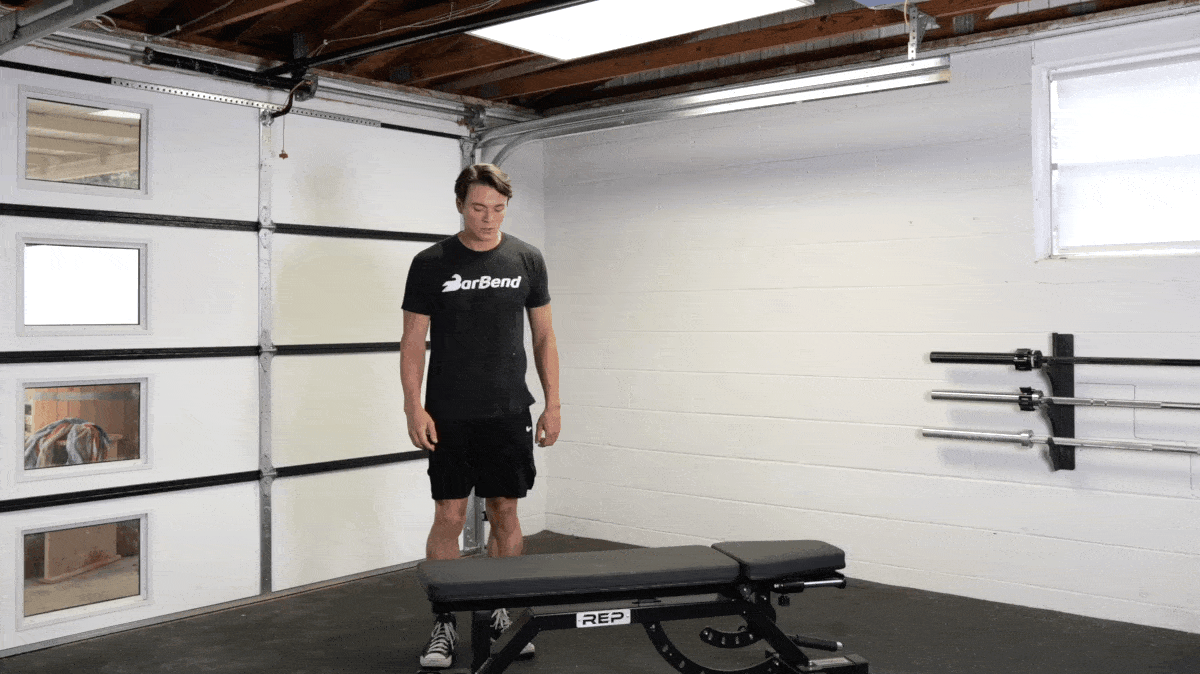
Using a deep step-up maximizes the range of motion of your quads. You’ll also have plenty of easy-to-use loading options, from dumbbells to kettlebells. If you’re looking for a great alternative to the leg extension, you’ve found it.
How to Do It:
- Grab a set of dumbbells or kettlebells and find a box or step-up platform. Choose a height that creates a 90-degree or more bend at the hip when performing your step-up.
- Place one foot on the surface of the box, ensuring that you maintain full foot contact.
- Brace your core, slightly hinge forward, and drive through your entire foot.
- Step onto the box to complete each repetition. Step down under control to maintain tension in your lower body.
Coach’s Tip: Perform equal repetitions on both legs to complete one set of step-ups. Lead with your more fatigable leg to ensure that you match the repetitions evenly.
Sets and Reps: Perform two to three sets of 10 to 12 repetitions per leg.
Reverse Lunge
Reverse lunges are one of your go-to options for intense burnout to finish off your session. Leg extensions are often placed at the end of a workout because they help safely fatigue your quadriceps. A high rep set of reverse lunges accomplishes a similar task, albeit with a bit more oomph on your cardio.
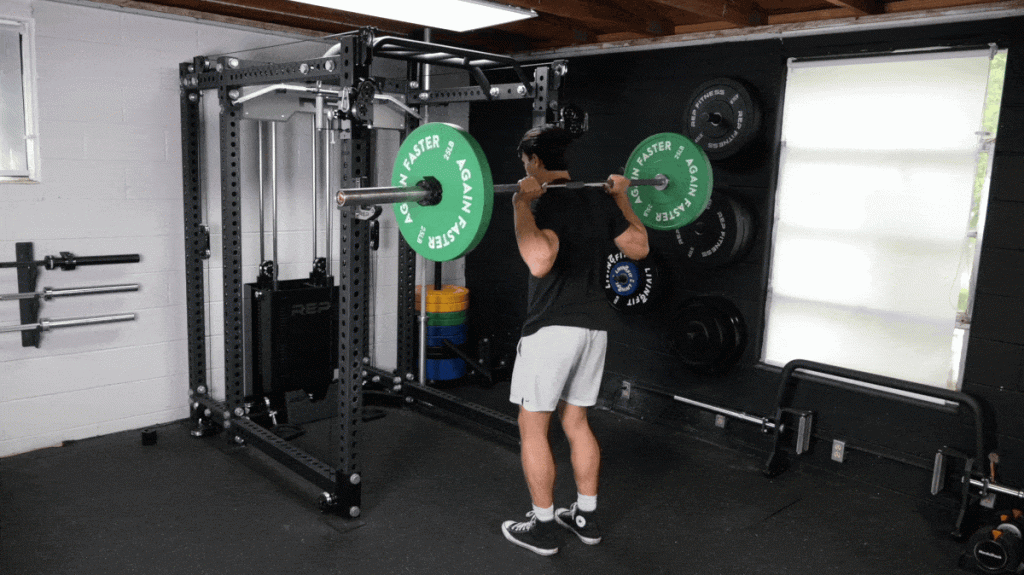
A reverse lunge takes the forward and walking versions and simplifies them a bit. Instead of coordinating each landing for your working leg, you’ll stay put. This allows you to put much more effort and focus into working as hard as possible.
How to Do It:
- Grab a dumbbell set and stand tall, bracing your core as you get set.
- Shift your body weight primarily onto your working leg, stepping back with your opposite leg into a deep stride.
- Lower yourself into the reverse lunge, continuing until your working leg reaches approximately 90 degrees of knee bend.
- Stand back up by pushing through your lead leg, flexing your quads and glutes. Repeat for repetitions on the same leg or alternate to complete your set.
Coach’s Tip: If you’re struggling to keep two dumbbells from moving during your set, try using a single weight in the goblet squat position instead.
Sets and Reps: Do two to three sets of 10 to 15 repetitions per leg.
Front-Foot Elevated Split Squat
Split squats are a tremendous overall lower body developer. Where you place the weight and how you arrange your stance also helps emphasize certain muscles. In this case, a front foot elevation helps to increase the emphasis on your quadriceps.
Elevating your front leg also helps to align your form. You may notice it is easier to maintain full foot contact, even as you reach the bottom position. With that in mind, maintain control throughout the entire exercise to ensure your quadriceps are being targeted as much as possible.
How to Do It:
- Grab a small elevated surface to serve as your front foot elevation (such as a 25-pound weight plate). The height only needs to be about one to two inches to do the job.
- Assume a split squat stance, with your front leg flat on the elevated surface and your trailing leg on the ground.
- Brace your core and tighten your quads and glutes. This is your starting position.
- Lower yourself under control to the bottom of the split squat. A small degree of forward motion towards the bottom of the repetition is perfectly fine.
- Drive yourself back to the starting position by pushing through your full foot.
Coach’s Tip: Be sure to maintain good form to get the most out of your front-foot elevated split squat. Try using a pause at the bottom of each repetition to make sure you’re using the perfect technique each time.
Sets and Reps: Try performing two to three sets of 10 to 12 repetitions per side.
Bulgarian Split Squat
The Bulgarian split squat (or rear-foot elevated split squat) is the close sibling of the front-foot elevated split squat. Instead of elevating your front foot, your rear foot is placed on a platform, shifting more of your body weight onto the working leg.
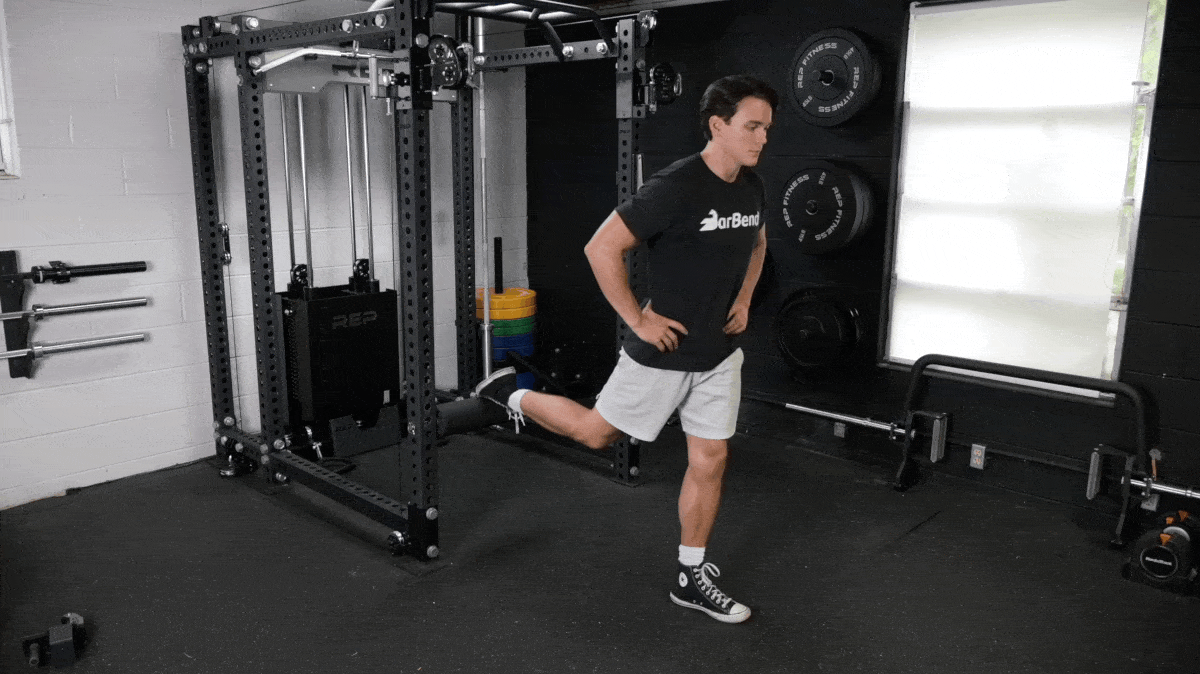
Another quintessential part of a Bulgarian split squat is bilateral loading. This means that both hands are holding a weight, making the Bulgarian split squat especially challenging. Not only is more body weight emphasized on the working leg, but you’re loading it more as well.
How to Do It:
- Grab two dumbbells and stand near a weight bench or box.
- Plant your working foot on the floor, ensuring full foot contact.
- Place your rear foot on the box. It should be a comfortable height that works well as a pivot point.
- Brace your core and descend into the bottom position. Your knee and hip should both be flexed to approximately 90 degrees.
- Drive through your full foot to stand back up into the starting position. Perform for repetitions.
Coach’s Tip: Be sure to drive down on your rear foot lightly to help stabilize your hips.
Sets and Reps: Aim for two or three sets of eight to 12 repetitions per leg.
Front-Foot Elevated Bulgarian Split Squat
The front-foot elevated Bulgarian split squat — quite a mouthful. This variation takes benefits from both the front-foot elevated split squat and the Bulgarian split squat to build your quads as a fantastic alternative to the leg extension.
The front foot elevation helps improve quad engagement on both the front and back legs. On the other hand (or…foot), the rear foot elevation helps improve how much weight you lift. Although it is a unilateral exercise, expect a brutal challenge for your full body on every single rep.
How to Do It:
- Place your working leg on a small platform or weight plate. Two or so inches of height is sufficient.
- Place your rear foot on a bench or box, using the ankle as a pivot point.
- Drive down on your back leg hard in order to stabilize your hips, and also help lift you from the bottom position.
- Lower yourself under control until your working leg reaches approximately 90 degrees of hip and knee flexion.
- Drive up through your full foot, flexing your quads on both legs to raise yourself back to the starting position.
Coach’s Tip: Be mindful of your mobility on this one. The rear leg often feels like a weighted couch stretch. If you feel like you’re losing balance, don’t force any more depth.
Sets and Reps: Perform two to three sets of 10 to 12 repetitions per leg.
Leg Extension Alternatives Warm-Up
Warming up your lower body is very important, especially with leg extension alternatives. The leg extension itself is a very stable machine that keeps you in a specific range of motion. Many of the alternatives require your own body weight and control. Therefore, a proper warm-up is especially beneficial for nailing your sets.
For example, try this:
- Sissy Squat: 1 x 3-5; tempo: 2-1-1-1
- Reverse Lunge: 1 x 15 per leg; unweighted
- Front-Foot Elevated Split Squat: 1 x 10 per leg; tempo: 2-1-1-1, 50% of working weight
- Bulgarian Split Squat: 1 x 10 per leg; tempo: 2-1-1-1, 50% of working weight
How to Train Your Quadriceps
Your quadriceps are a multi-joint muscle group that extends your knee and flexes your hip. This means that a large number of exercises target them in some way, but some provide different benefits than others.
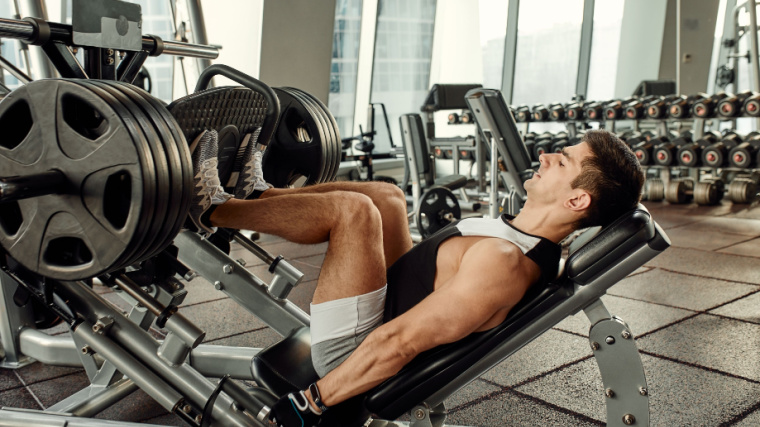
[Read More: 5 At-Home Workouts for Strength, Muscle Growth, Power, and More]
The leg extension and its alternatives are ones that you’ll want to train consistently. Here’s why.
Quadriceps Exercise Selection
A good lower body program has exercises that overlap many muscle groups at the same time. This is the same for your leg extension alternatives, so choosing two to three is more than sufficient.
Look for at least one exercise that you use higher weight on (for example, the Bulgarian split squat), and one exercise that you use higher repetitions with (for example, the seated bodyweight leg extension). Finally, hitting up a burnout with something like the reverse lunge for a workout finisher is a great way to end the day.
Quadriceps Sets and Reps
Training your quadriceps is a fun but challenging experience. It’s possible to pursue strength, muscle mass, and endurance to a greater degree just by manipulating your set and repetition schemes. Here’s how to do it:
- For Strength: Train two to three sets of three to five repetitions with two minutes of rest between sets.
- For Muscle Growth: Train two to three sets of eight to 12 repetitions with approximately 90 seconds between sets.
- For Endurance: Train three to four sets of 12 to 15 repetitions with approximately 30-45 seconds of rest between sets.
It’s a good idea to work towards the heavier side of each repetition range recommendation over time. Jumping head first into the lower repetition sets could be less effective out the gate if you aren’t as experienced with an exercise. Take your time, especially with the unilateral training options, and dedicate yourself to clean technique across the board.
Leg Extension Alternatives Training Tips
Your leg extension alternatives offer a few important considerations to maximize your results. Boost your progress in your lower body workouts by knowing when to use more load, knowing when to lean into higher repetitions, and which exercises make great pairings.
Know When to Load It
Certain leg extension alternatives are better to load up than others. The leg extension gets hard with less weight because of how long your legs are. As you continue to extend your leg against the resistance, it starts to feel harder because the weight travels farther from the working muscle.
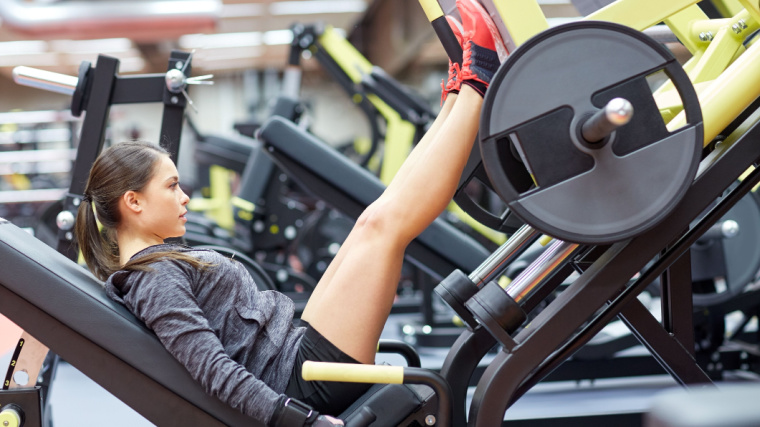
[Read More: Master the Leg Curl for Stronger Hamstrings and Heavier Deadlifts]
Other leg extension alternatives keep the lever a bit shorter but compensate by adding more weight. The Bulgarian split squat and step-up are great examples here. You can use more classic progressive overload techniques by slowly adding weight to increase the challenge here.
Know When to Rep It Out
On the flip side, certain leg extension alternatives are much more difficult to safely or effectively load. Where the Bulgarian split squat remains fairly consistent and takes on extra weight more easily, other exercises do not. It may be logistically harder to add weight or it may even be a bit of a safety concern.
[Read More: The Single-Leg Deadlift Is the Best Pulling Accessory You’re Not Doing]
Hanging leg raises and sissy squats, for example, would be extremely difficult to effectively add weight to. In these cases, adding more repetitions to reach a solid end-of-set challenge is the move. Instead of trying to rig up some complex method of weighing your limbs, simply push for a higher repetition count.
Train in Pairs
Getting a solid leg day workout typically requires more than one exercise. Each leg extension alternative gives you a good complement of muscle gain, an increase in strength, and unilateral training. By pairing certain exercises (such as the sissy squat and reverse lunge), you’ll gain a ton of quadriceps benefits all from the same workout.
[Read More: How to Do the Pistol Squat For Mobility and Leg Strength]
A good way to look at pairing exercises is to combine one that is more weighted and one that is more repetition-heavy. This way, you’ll capture a great spread of gains without doubling down on the same style of challenge time after time in the same workout.
Benefits of Training Leg Extension Alternatives
Leg extension alternatives can easily become a staple in your leg day for an array of reasons. They build your quads without relying on a barbell; you won’t even need the typical machine; and they allow you to effortlessly weave them throughout a busy gym.
Build Your Quads
The quadriceps are a huge muscle group that makes up your thigh. Although they are considered a single training target, they are actually made up of four unique muscles that work synergistically. What makes them a bit more unique is that one of the four muscles in the group has a slightly different attachment point than the others.
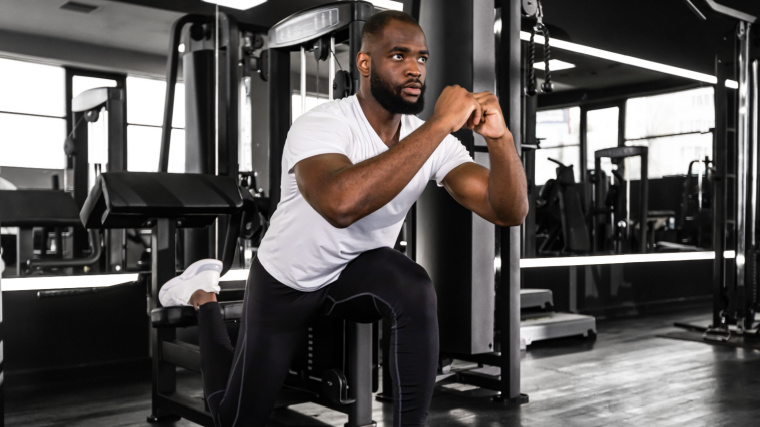
[Read More: The 15 Best Home Gym Machines]
The rectus femoris attaches just below the knee and just above the hip. This means that exercises such as the leg extension have a greater specific impact on its development than, say, a squat or leg press pattern. (1) Many lower body exercises help pump up your quadriceps more generally, but the leg extension and its most similar alternatives bias the rectus femoris.
No Need for Machines
The leg extension is a great piece of training equipment, but it also requires you to have a gym membership or the resources to buy the machine itself. While extremely valuable, you may find yourself in a scenario where the leg extension machine is simply inaccessible.
The majority of these alternatives do not require you to have a machine to effectively perform each exercise. The lion’s share of leg extension alternatives are done simply with body weight or dumbbells. This comes in particularly handy if you’re training from home and an insufficiently stocked gym.
Plenty of Options
Every leg day program is going to look a little different based on your goals. Perhaps it is a very strength-dominant program with tons of squats. Maybe you’re interested in maximizing muscle growth with the leg press and lunges. Whatever the case, you’re not alone. Many lifters have a diverse array of training needs and often overlap your scheduled session.
However, there is a near-universal desire to knock out some leg extensions. Either because of its seemingly unique benefits or because it’s just woven into the collective gym psyche, many lower body sessions tend to include them. While it would be great to have free access to them on demand, this highly sought-after piece of equipment is often in use right when you need it.
[Read More: Do the Romanian Deadlift for Bigger Legs and a Seriously-Strong Back]
Leg extension alternatives free you from the burden of waiting in line. The plethora of alternatives provides a great selection of options to keep you effectively moving throughout your workout without having to wait around.
What Muscles Make Up the Quadriceps
The leg extension is a unique option to target your quadriceps because of their anatomy. The quadriceps are composed of four individual muscles, one of which has a slightly different origin and insertion. You’ll be hitting the rectus femoris, vastus medialis, vastus lateralis, and vastus intermedius with your leg extension alternatives.
Rectus Femoris
The rectus femoris is one of the most important considerations during leg extensions. This is because it uniquely attaches just below the knee and just above the hip. Unlike the other quadriceps muscles, this means that major squatting patterns won’t maximally stimulate it. Since it crosses two joints, it works dynamically to stabilize instead of being anchored in position for maximal force production per repetition.
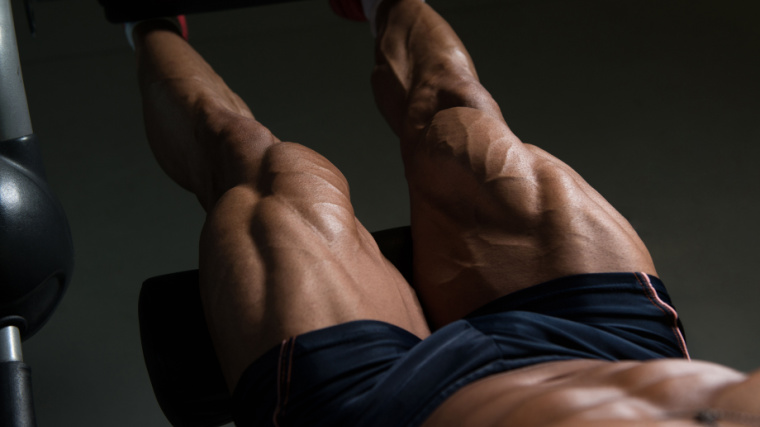
[Read More: The 18 Best Pre-Workouts, RDN-Approved (Personally Tested)]
The leg extension allows you to anchor the hips as you extend the knee, this means the rectus femoris gets stimulation in the same way as the rest of the quads. Keeping leg extensions in your program (or many of its similar alternatives) means you’ll be better able to fully grow your quadriceps.
Vastus Lateralis
Vastus lateralis is one of your other three quadriceps muscles that makes up your thigh musculature. It attaches just below your hip crease to just below your knee making it extremely effective at extending your knee joint. Given the name (lateralis), it sits towards the outside of your thigh.
Vastus Medialis
Vastus medialis is a near mirror image of your vastus lateralis. It sits on the medial side of your thigh (innermost), and also attaches just below your hip crease to just below your knee. This means it also works really well to extend your knee joint in conjunction with the other quadriceps muscles.
Vastus Intermedius
The vastus intermedius is the final of your four major quadriceps muscles. It originates from the upper two-thirds of your thigh, slightly out to the lateral side. It then attaches just below your knee, making it similarly effective at extending your leg like the other quadriceps muscles.
The vastus intermedius sits deeper (just underneath) your rectus femoris, meaning that growing these muscles helps puff up the entire leg as they grow together.
More Training Content
The leg extension rightfully takes a top spot in so many lower body training sessions. However, if you find yourself without the right equipment, navigating a busy gym, or just looking for a new challenge, there are many leg extension alternatives to help meet your needs.
From calisthenics training to weighted and brutal split squat variations, your quads should never go without. From building muscle, training unilateral balance, or even strength, there’s a leg extension alternative that fits the bill.
To fuel your quest for more gains, check out more BarBend articles on building your best tree trunks.
- The Best Bodyweight Leg Workouts to Crush Leg Day Anywhere
- How to Train Your Legs for Maximum Hypertrophy
- The Tom Platz Leg Workout for Building an Unbelievable Lower Body
References
- Ema, R., Sakaguchi, M., Akagi, R., & Kawakami, Y. (2016). Unique activation of the quadriceps femoris during single- and multi-joint exercises. European journal of applied physiology, 116(5), 1031–1041.
Featured Image: vladee / Shutterstock
The post The 8 Best Leg Extension Alternatives to Build Huge Quads appeared first on BarBend.
